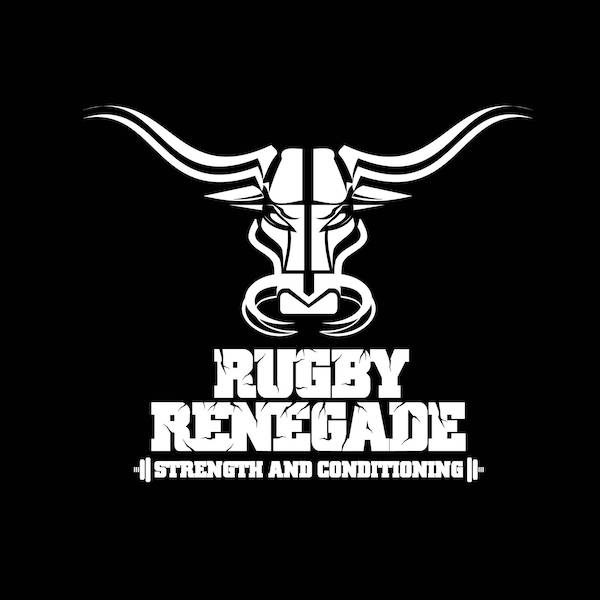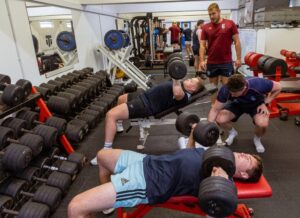By Wes Feighner
If you are doing cleans, you should strive to do them well. Whether you compete in CrossFit, strength train for another sport, or just like attempting difficult things in your garage, the clean is becoming ever more prevalent in today’s training sessions. The excuse “I’m not a weightlifter” for not improving doesn’t really make any sense to me. I’m not a chef, but I like when my food tastes good.
The tips provided in this article are to help you troubleshoot your clean. This is also assuming you don’t have a credible weightlifting coach standing next to you. If so, you don’t need to read this. The coach can just help you.
As a coach, I’ve given numerous seminars and worked with athletes from all sports. I generally see 3 different types of lifting mistakes when cleaning, and most people will fall into one of these three categories. We will discuss what they are and then how to fix them. This is by no means an all encompassing list, but rather a generalized representation of mistakes.
The Hips Rise Too Fast
Disclaimer on this: as the weights approach maximal percentages, a degree of the hips rising becomes a little unavoidable to an extent. There are also differing schools of thought on how much the hips can rise, pro- vided the bar is also moving up at a proportional speed.
The hips shooting up off of the ground is one of the most common mistakes I see. The problem with this is that it means our torso is slowly (or quickly) falling over the bar, and as the bar keeps traveling upward, we are increasingly pulled forward leading into the power position. This means that we will be more likely to jump forward (we have all seen the clean broad jump person), and this also puts us in a position to loop the bar away from us. Also of note, we typically have to over compensate the other direction to get the bar back into the optimal position.
To fix it: First we need to set our back. When the back is locked and tight from the start, we can then activate our legs more. The key to keeping our position is initiating the lift by pushing through the legs. Think like you are doing a leg press, or just push- ing the floor away from you. When we initiate the pull by pushing through our legs, we can keep our torso angle constant. We can keep our shoulders over the bar, and this covering the bar will help transfer up power into the bar later. If we pull with the upper body from the ground, you will see the shoulders start to rock back and then fall forward as the bar continues moving. The other key to keeping a good torso angle is to relax the arms, which takes us into the next cue.
The Early Arm Bend
Disclaimer on this one: some prominent lifters do display a bit of an arm bend. Typically this is performed as the bar passes the knee. The lifter will bend the arms to bring the bar into the hips using this bend and the lats as well. There is also an entire technique known as “hip cleaning” that utilizes this. For the purposes of this article, I’m not going to address the hip clean, and will focus instead on mistakes that occur from people bending their arms too much.
This mistake is very common in athletes that are upper body dominant. I see it more in male athletes, but it is by no means exclusive to that category. This becomes an issue for people in a couple of places. If the bend occurs immediately off the floor, the lifter often gets pulled forward over the bar. When this happens, it causes all the problems associated with problem number one above. If the bend is more prominent as the bar approaches the hips, it can create bar path issues for the lifter. I notice with many people they will “brace for the contact,” meaning their arms will tense up and bend right before the legs come through the bar. This tends to make the bar drift away from the lifter after the point of contact. The arms are already rigid as the bar approaches the hips, and that lever in the arms is simply maintained at that point (t-rex arms?).
 Premature arm bending. See correct arm position above!
Premature arm bending. See correct arm position above!
We fix this by maintaining loose arms up until the point of contact. We want to allow the arms to be long and relaxed throughout the first pull. This will keep the bar closer throughout the lift, as well as allow the legs to trans- fer power into the bar. The arms must
become active, but not until the legs are done pushing. The other thing to remember is that with a clean, the con- tact is lower than when snatching. I’ve coached a handful of people that were literally rowing the bar upward into the hips because they thought the contact should be in the same place as when snatching. The clean has a closer grip and when the arms are loose, the bar will naturally hit lower on the thigh. This is not an issue, and the priority is always a straight bar path.
Bar Contact Issues…
The bar gets knocked away or you have trouble making contact… When I first started coaching, it seemed that an overwhelming amount of people had trouble with making any contact with the bar. More recently though, it seems as though people actually bang into the bar TOO hard, causing more problems than it helps. These are both two sides to the same coin, so I’ve grouped them together.
Both problems are equally detrimental, and knowing how to transfer power into the bar with your legs without causing it to loop away can be tough when learning the lift. First, let’s address the problem of not making any bar contact.
Though not making any contact can allow for an extremely straight bar path, we don’t properly utilize enough force transfer into the barbell, making it difficult to put up heavier weights. The bar simply will not get as high if we don’t touch it, and the name of the game is bar height. Not making contact usually occurs due to one or two factors. First, if your arms are too tense as we begin the lift, it will not end up close to the legs as you pass the knees. In this case, you are liter- ally holding the bar away from yourself. If you relax the arms, the bar will naturally drift towards your body and end up against your leg once you’re upright.
The other factor that can cause us to bypass contact is initiating the second pull too soon. As we pass the knees, if we are not patient and do not allow the bar to end up at the proper height, we tend to pull prematurely with the upper body and this pull bypasses the legs. We want to use the upper body, but not until after the legs finish driving through it. Using the arms too early usually causes the lifter to lean back early and miss the leg contact altogether.
Now on the opposite end of the spectrum, we have the case of banging the bar away from us. It seems that we often confuse “power” with “contact.” We must remember that it’s all about how high the bar can get, not about how much force we put into it at all costs. Specifically, this means that any force that makes the bar travel away from us is not good force.
Force moving up is good. Force moving away is bad. It’s that simple. So as the bar begins to approach the point of contact, we must remember that our primary goal is to drive the bar upward. A way I like to think of it is driving the bar upward by violently straightening the legs, as opposed to swinging the hips forward. In terms of practical application these don’t look all that much different, but I find that focusing on this helps prevent any excess hip swinging in the horizontal direction.
The other thing that will keep our bar close as we meet the bar is relaxing the arms. I spoke about this as a fix for many things, but in this case tensing the arms early resists our own leg power. We essentially handcuff ourselves from being able to get all of our leg power into the bar. Utilize the arms, but not until the legs are done.
 Correct bar position post contact
Correct bar position post contact
A big thank you to Wes for sharing this superb article with the Rugby Renegade community… Hopefully this article will help you work on your clean technique, so that you get the best from this classic power exercise.
Wes Feighner
Head of Brea Barbell in SoCal
Head Coach at Virtus Strength
@WFeighner
Want to become the machine you were meant to be??












